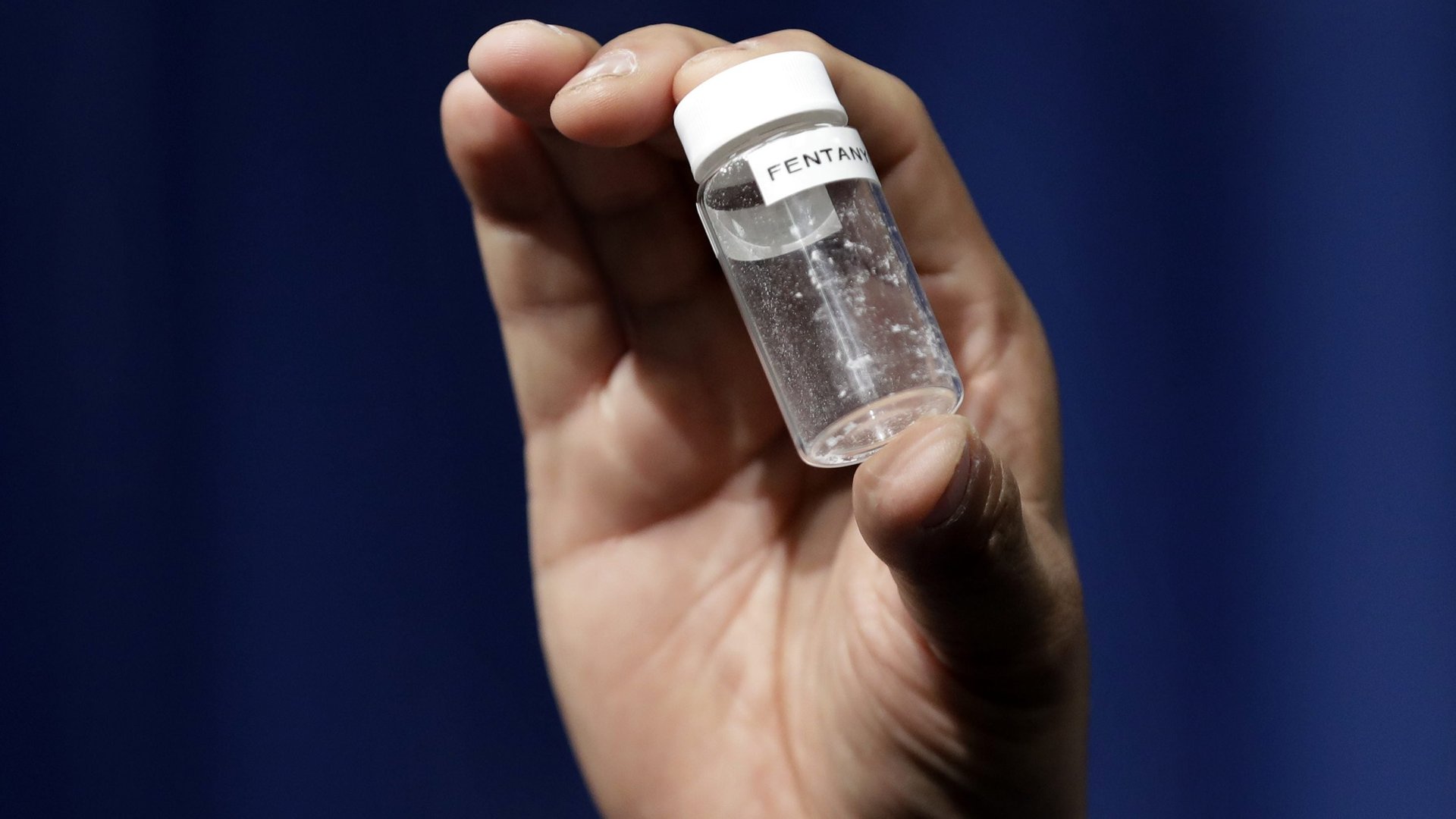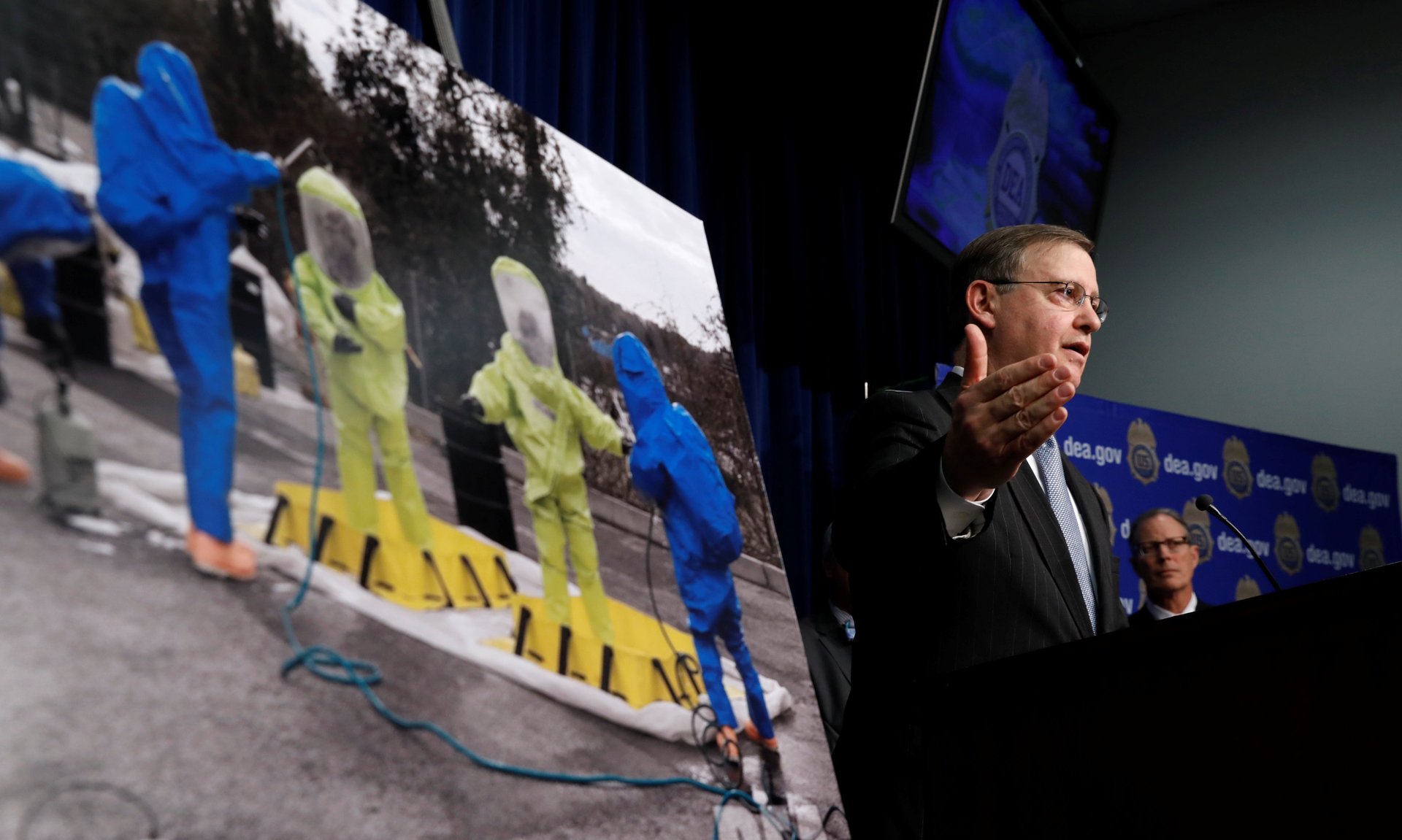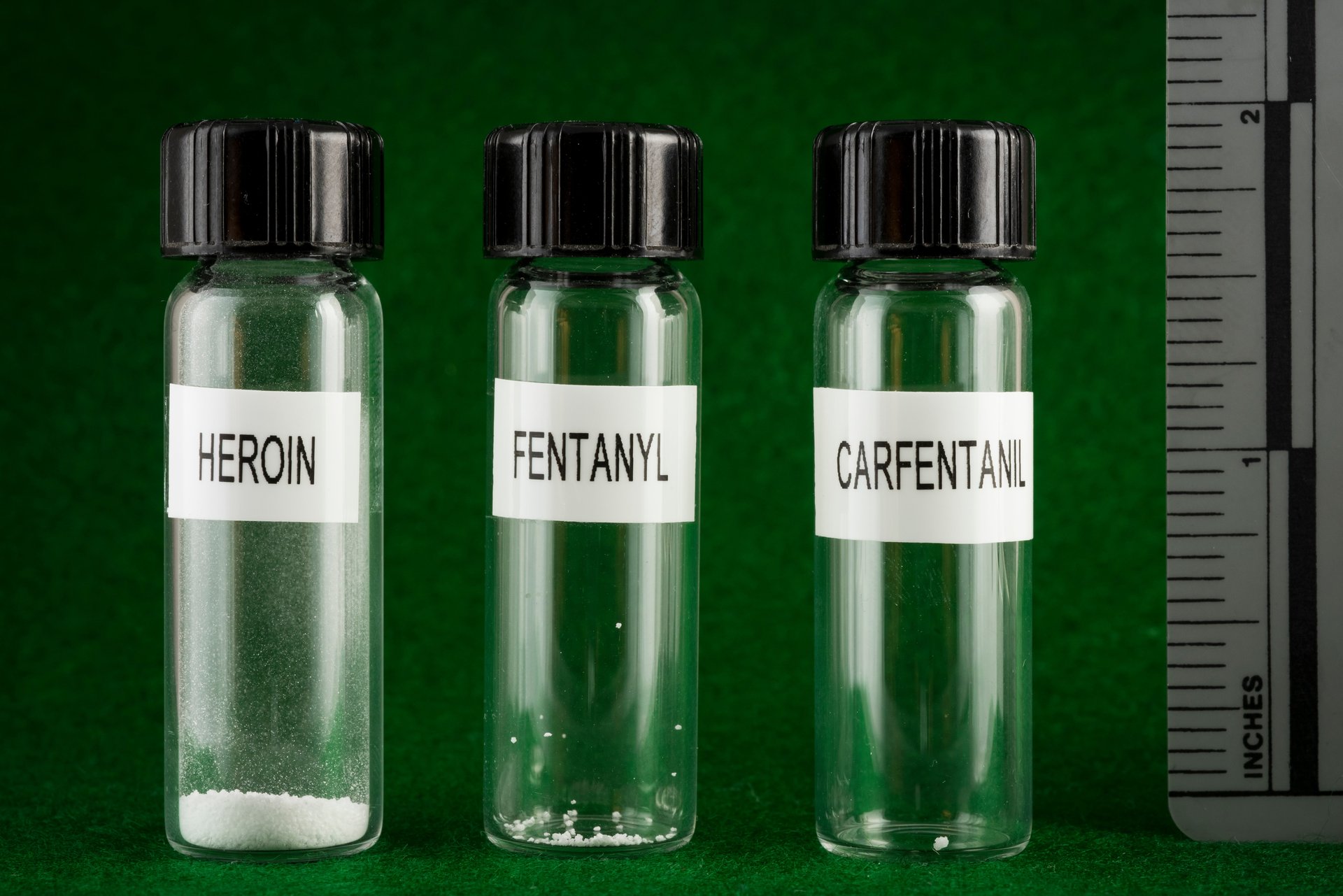The tiniest exposure to this drug can make America’s opioid crisis lethal even for the police
The opioid crisis in the US has grown to such alarming dimensions that librarians have to administer rescue drugs, police officers suffer from accidental exposure and their canine partners are increasingly vulnerable to overdose by ingesting trace amounts of narcotics.


The opioid crisis in the US has grown to such alarming dimensions that librarians have to administer rescue drugs, police officers suffer from accidental exposure and their canine partners are increasingly vulnerable to overdose by ingesting trace amounts of narcotics.
And now federal authorities are warning all first-responders, including paramedics and firefighters, about the lethal dangers of fentanyl, a synthetic opioid that is so powerful that merely touching it can send you into an overdose. Officials say that inhaling or absorbing a tiny amount matching just five or six grains of salt through a scrape or cut can kill, USA Today reports.
The toll of the overall epidemic has been staggering. Between 1999 and 2015, the number of deaths from opioid overdose quadrupled in the United States—meaning that about 91 people die from opioid abuse every day, according to the Centers for Disease Control and Prevention (CDC).
Although heroin use has been on the rise among all demographics, the main drivers of the crisis are prescription opioids such as oxycodone, hydrocodone, and methadone, the CDC says. Since 2013, law enforcement have been encountering more and more drugs that test positive for fentanyl, which is 25 to 50 times more potent than heroin. An even more recent development is lacing drugs with carfentanil, a substance used as an elephant tranquilizer.
The drugs in circulation now are so powerful, that they often lead to unexpected consequences:
The US drug agency was forced to issue its warning
On Tuesday (June 6), the Drug Enforcement Administration issued the urgent warning to law enforcement and first responders to caution them about the drug’s lethality, urging precautions including gloves, masks and even shoe coverings at potential drug scenes.

This move came after officers in at least four states suffered exposures. In one case in May, an Ohio police officer was left with some white residue on his shirt after searching a car of drug-dealer suspects. An hour after he absentmindedly brushed off the powder, he lost consciousness. He needed four doses of Narcan (naloxone), the overdose-reversing drug, to recover. According to the online trade publication EMS1, a firefighter-paramedic in Manitoba, Canada also had to be given Narcan after he experienced problems with breathing when responding to a possible fentanyl overdose.
SWAT Teams are re-thinking their raid tactics
After a flash-bang grenade hit a stash of powdered heroin and fentanyl during a drug raid in Hartford in 2016, Connecticut, 11 SWAT team members were sent to the hospital to be treated for their exposure to the narcotics. Police are already considering whether to change their procedures, for instance by introducing gas masks or hazmat suits, according to NPR. They are also stocking up on Narcan.
Cold-storage trailers have been used to supplement local morgues
Several counties in Ohio, a state with one of the highest rates of drug overdose deaths in the US, are routinely running out of space in their local morgues, The Canton Repository and NBC News reported. They have has to borrow temporary cold-storage trailers, normally intended for disaster response, from the state’s health department. Drugs aren’t the only reason for the morgue shortage—the suicide rate in the area has also gone up, according to local law enforcement —but they are a significant factor. In March, an investigator told NBC that “the new thing” was mixing methamphetamine with carfentanil.

Funeral homes and crime labs have to store Narcan…
In Canada, where the problem is just as acute, funeral homes started keeping naloxone in case mourners or their staff handling bodies accidentally overdose on drugs. Crime labs also now have extra doses of the treatment on hand.
…librarians have to administer it…
In Philadelphia, librarians at one location have become so accustomed to overdoses in the bathroom they can tell what kind of drug the victim had used by the sound they make falling to the floor—sliding down for heroin, collapsing for fentanyl, reported Philadelphia Inquirer columnist Mike Newall. Librarians in North Philadelphia have been training how to use Narcan. One of them had to use it on four people.
…and officers have started to carry it to save their K-9 partners
A small amount of fentanyl can kill a human, but it takes even less for dogs. Last year, three dogs in Florida had to be rushed to a vet after ingesting the drug, which they can also absorb through their paws. “Dogs are not looking for drugs with their eyes and feeling with their fingers; they’re literally breathing it in and inhaling it,” Brian Foley, deputy police chief in Hartford, Connecticut told CBS News. In Massachusetts, officers are now carrying Narcan inhalers for K-9 partners.